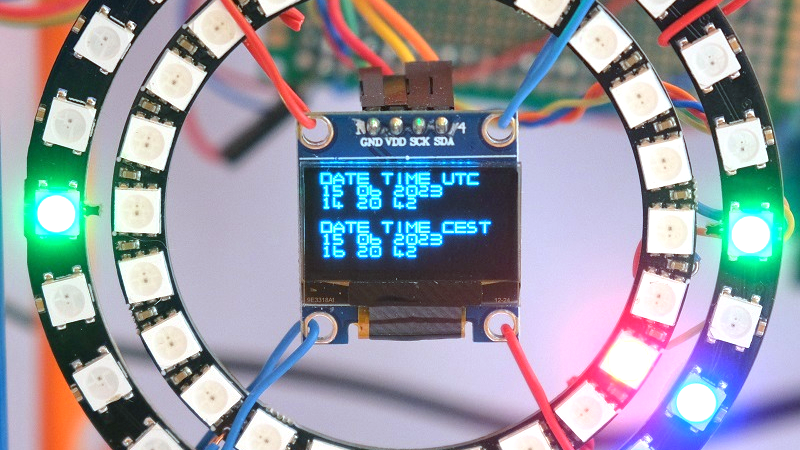You decide to build a clock. The first thing you have you determine if it is going to be digital or analog. Or is it? If you build [Ivanek240267]’s clock, you can have both.
The digital portion uses an OLED display. The analog portion contains two rings of smart LEDs. The WiFi configuration is always an issue in projects like this, and this clock also offers options. In addition, the Raspberry Pi Pico-based clock also sets itself via NTP.
You can, of course, compile the WiFi credentials into the code, and assuming you don’t plan on changing networks, that’s fine. But if you’re in a more dynamic situation, the clock can also read its configuration from a memory card.
The analog clock uses colors. The green LEDs represent quarter hours. The blue LEDs are for minutes, while the red ones are full hours. Of course, reading the OLED doesn’t require any special interpretation.
When debugging, the timing doesn’t drive the smart LEDs. That means if you need to work on that part of the code, you won’t be able to count on debugging support.
We’ve mentioned before that digital clocks are all analog, anyway. If you want to use fewer LEDs, you can get by with only five.

















Great clock, but a ring of LEDs is hardly an analog display.
It is analog. The current time is analogous to the position of the LEDs. It is not digitally written on the external ring.
But it is also a digitally driven analog clock.
The LEDs on the outside ring are on or off, and they are not dithered with the adjacent LEDs in any way to provide intermediate values. Don’t know what you call that where you come from but here we call that digital. You seem to think that analog means non-numeric or non-textual – it doesn’t.
BTW – I like the clock (as I said). I just think calling it analog is stretching things to breaking point.
I think that’s stretching the definition of an “analog clock” a wee bit…
It’s a Digi-Log Clock !
I think it is time for a new category on HAD it should be named “Kindergarten” or “My first Project”
I don’t consider it a hack to buy 4 of the shelf modules and wire them up to display the time.
This project is for beginers that’s keen to electronics. Hack is not in wires. NeoPixels is so sensitive to precise timing and WiFi uses interrupt that breaks it. Hack is in source code. But you can’t understand this…
So where’s your 1:1 747 jet running off a single NodeMCU project?
Hack is by using critical__section_8h to avoid CYW43439 wireless chip ruin NeoPxels timing.
https://www.raspberrypi.com/documentation/pico-sdk/critical__section_8h.html
Stop posting stupid comments if don’t understand this…
I think it is time for a new category of HAD commentard, it should be named “Elitest Troll”.
I like the look of the clock and appreciate the content on the github page and the detailed notes, illustrations and code on the project page.
Not analog. Not a hack.